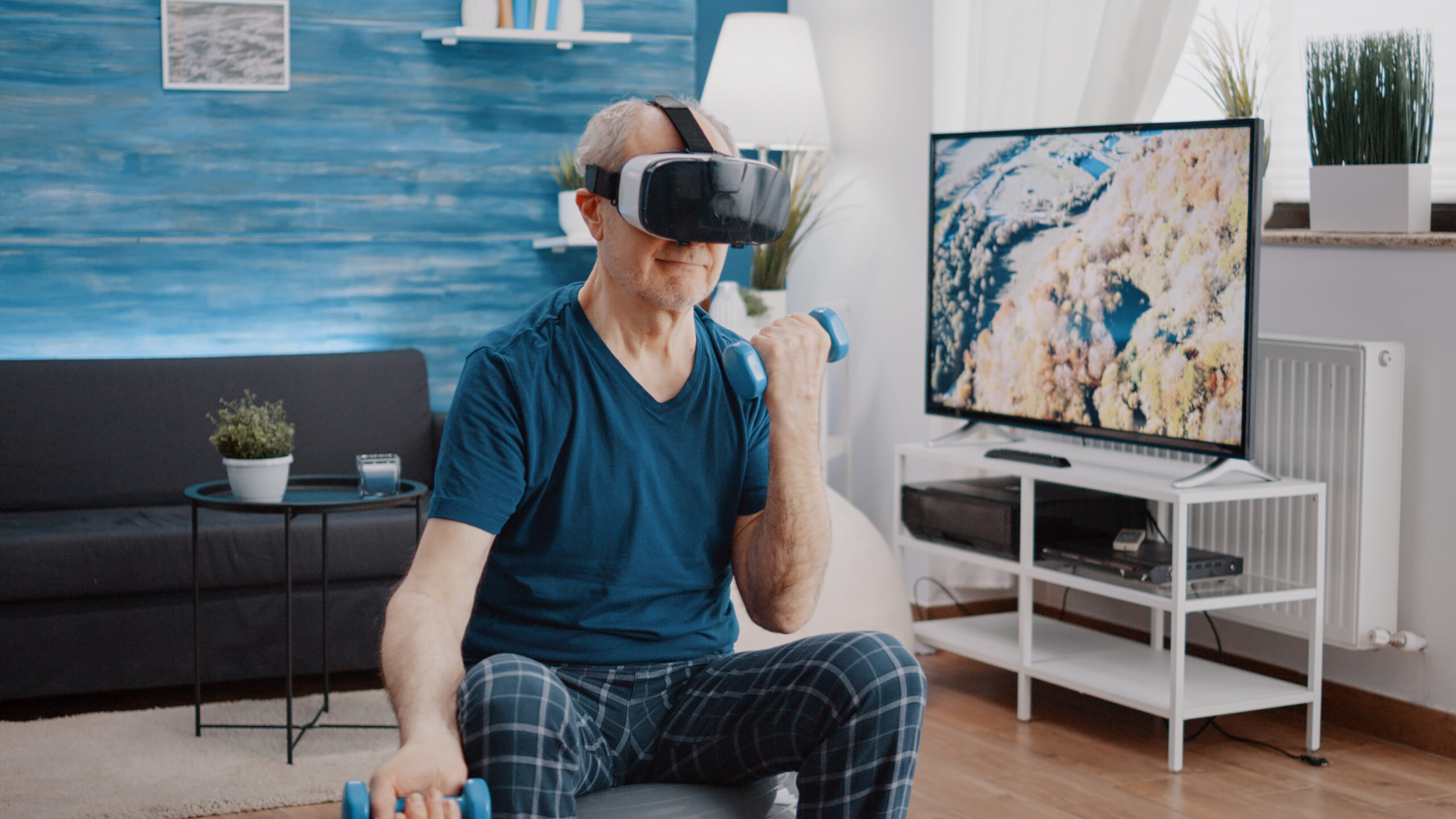- Home
- About
- Services
Start unlocking endless possibilities
- Industries
- Case studies
- Blog
- Contact
Virtual Reality Immersion therapy has shown great potential in various fields, including mental health, physical rehabilitation, and education. Here are some use cases and case studies that demonstrate the effectiveness of Virtual Reality Immersion therapy.

A therapeutic center observed that patients suffering from fear of flying undergoing traditional treatment methods showed very low results. After research, it was decided to use an experience mode of treatment to help their patient overcome their problems.
A VR application was designed to mimic the experience of going through airport security, boarding a plane, and taking off. The therapist would use a technique called “graded exposure” to gradually expose the patient to their fear. The simulation would start with a less intimidating scenario, such as being in the airport terminal, and gradually progress to more challenging situations, such as boarding the plane.
The therapist would constantly monitor the patient and teach them relaxation techniques, such as deep breathing and progressive muscle relaxation, to help them manage their anxiety while in the virtual environment.
The patients have shown significant improvement after VR therapy. Studies conducted by various medical institutions also have shown that VR exposure therapy for fear of flying can significantly reduce anxiety and improve confidence in flying. By providing a safe and controlled environment for patients to confront their fears, VR therapy can help them overcome their fear of flying and regain the freedom to travel.
Virtual Reality exposure therapy can be used in PTSD patients to reduce the symptoms such as nightmares, flashbacks, and hyperarousal. Some causes of PSTD are Combat exposure, Sexual violence, Natural disasters, Accidents, Violence, Childhood trauma, and Medical trauma.
VR simulations will be designed for various causes and scenarios that the patient had suffered. They would gradually be exposed to more intense stimuli related to the traumatic event while using relaxation techniques and coping skills to manage their anxiety.
A study conducted by Cedars-Sinai Medical Center showed that patients who used VR as part of their chronic pain management program experienced significant reductions in pain and were able to reduce their use of opioid medication.
The patient’s attention can be diverted by showing a virtual world experience in a virtual head-mounted device. The patient will be transported to a different world while the physician or therapist can do the procedure. The patient may not feel the pain as she will be immersively involved in the virtual world experience that absorbs more of the brain’s attention.
Scenes such as oceanic scenes, dolphins swimming, and other natural wonders that are visually pleasing can grab the patient’s attention during the treatment.T
Patients who suffer from strokes can use VR in their stroke rehabilitation program to improve their arm function, balance, and gait. A study conducted at the University of Minnesota showed significant improvements in patients undergoing a VR treatment procedure.
VR medical procedures can be extensively used to provide training to both students and as skill improvement for upskilling staff in hospitals and clinics. It is observed that the candidates who attended VR surgical procedures performed better than those who received traditional training methods.
A sample VR for a nursing institute assignment can be a virtual walk-through of a hospital or a specific place, observing the issues and problems faced by the people and submitting a report on the same. Similar VR experiences showing real-world scenarios can be created for classroom sessions and assignments as part of the academic studies to conduct practical sessions virtually to help students attend the class from anywhere and reduce the cost of conducting practical classes. The session can be delivered over the internet and web browser or viewed on a head mount device for an immersive experience.
In summary, Virtual Reality Immersion therapy has been shown to be effective in a range of use cases, from mental health to physical rehabilitation and education. These case studies demonstrate the potential of VR technology to provide immersive and engaging experiences that can significantly improve patient outcomes and learning outcomes.
Contact us to know more details on immersive Virtual reality applications
TILTLABS is a product realization company that operates mainly Metaverse, XR & Mobility, Virtual Production, Games & Gamification, Blockchain, and NFT. We specialize in using emerging technologies to create interactive, intuitive, and immersive experiences that really matter.
Ground Floor
Carnival Technopark,
Technopark Campus
Thiruvananthapuram- 695581
Kerala, India
[email protected]
+91 471 4050401
© TILTLABS. All rights reserved